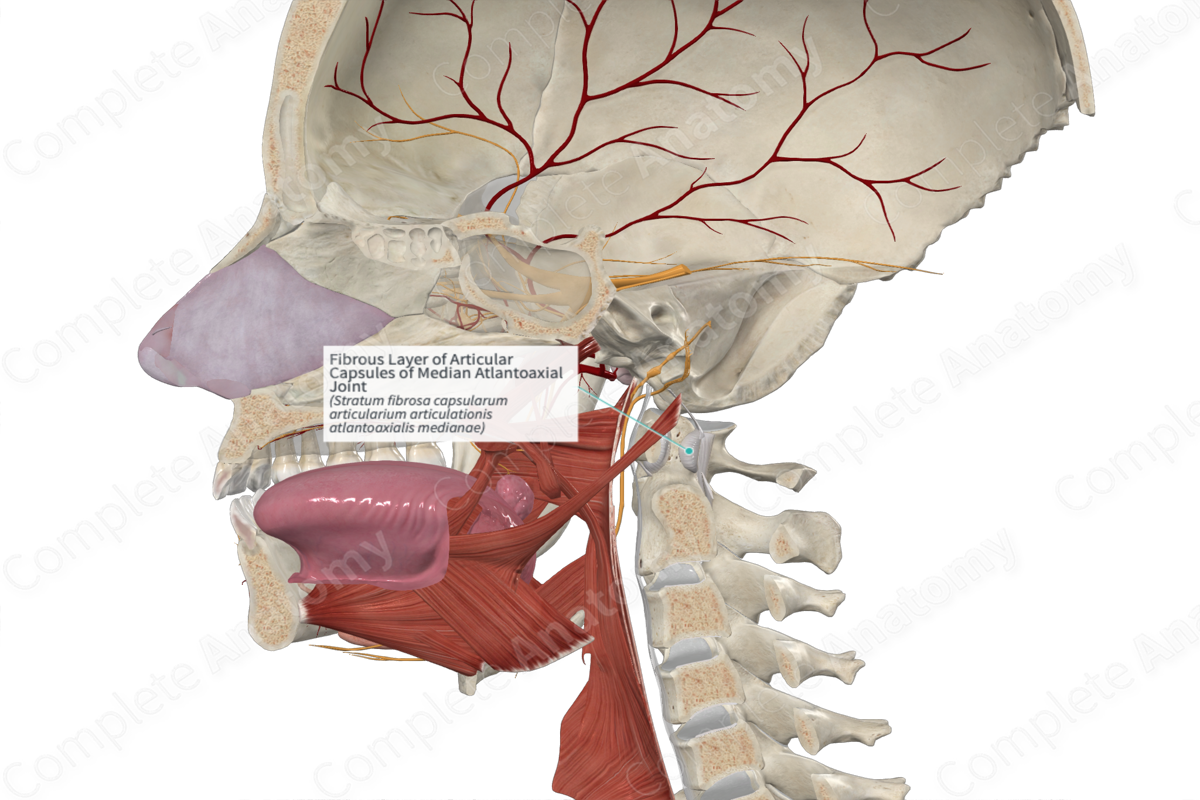
Fibrous Layer of Articular Capsules of Median Atlantoaxial Joint
Stratum fibrosa capsularum articularium articulationis atlantoaxialis medianae
Read moreStructure
The median atlantoaxial joint is the pivot joint in which the dens of the axis articulates anteriorly with the anterior arch of the atlas, and posteriorly with the transverse ligament of the atlas. Between these two articulations are vertically orientated joint spaces surrounded by articular capsules. The articular capsules are composed of a fibrous layer lined by a synovial membrane (Ebraheim et al., 1997).
Anatomical Relations
The articular capsules of the median atlantoaxial joint are located:
—around the articulation between the dens of the axis and the articular facet for the dens on the anterior arch of the atlas;
—around the articulation between the dens of the axis and the articular area on the transverse ligament of the atlas (Ebraheim et al., 1997).
Function
The articular capsule of the median atlantoaxial joint supports the atlantoaxial joint, holding the articulating bones together.
List of Clinical Correlates
—Atlantoaxial dislocation
References
Ebraheim, N. A., Yang, H., Lu, J., Biyani, A. and Yeasting, R. A. (1997) 'Cartilage and synovium of the human atlanto-odontoid joint. An anatomic and histological study', Acta Anat (Basel), 159(1), pp. 48-56.
Learn more about this topic from other Elsevier products




